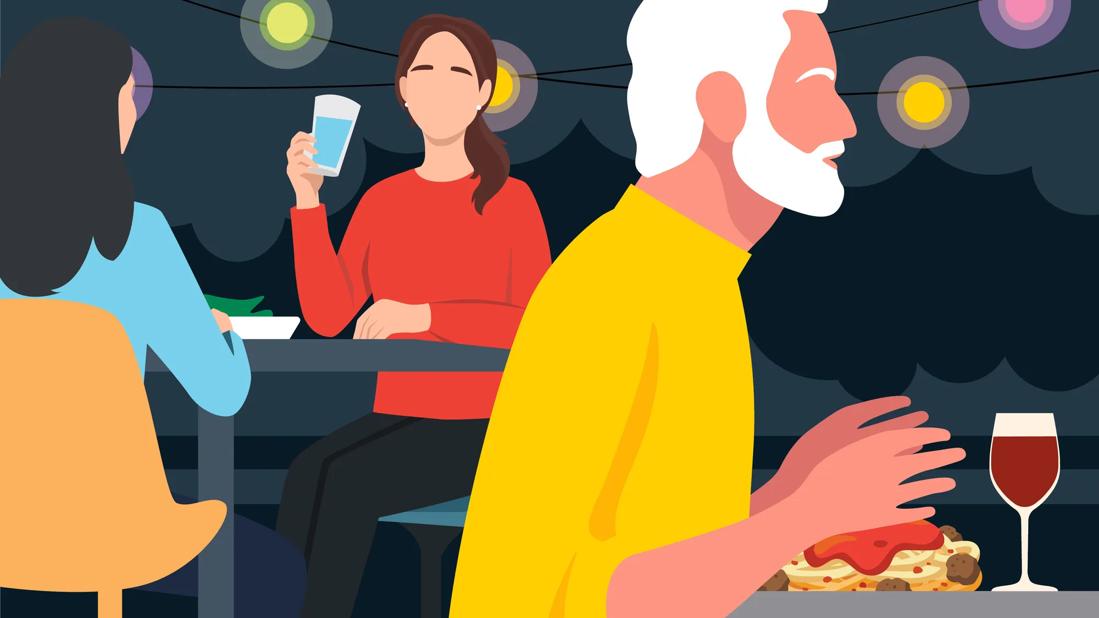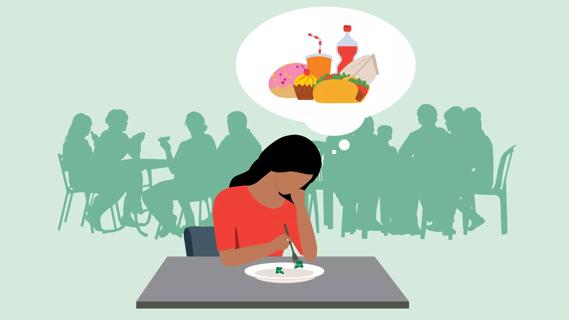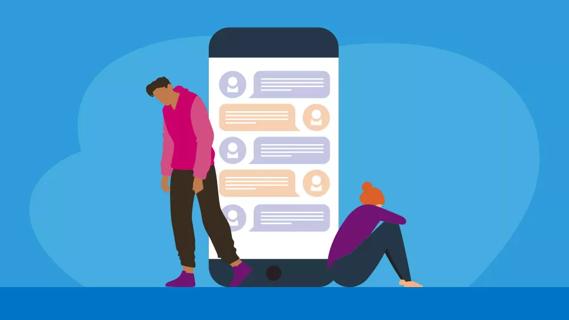This is an eating pattern that doesn’t meet the criteria for an eating disorder but can still be harmful

A good relationship with food is foundational to sticking with healthy eating habits. And those healthy eating habits are critical to living a healthy lifestyle.
Advertisement
Cleveland Clinic is a non-profit academic medical center. Advertising on our site helps support our mission. We do not endorse non-Cleveland Clinic products or services. Policy
So, when you’re engaging in disordered eating, it can take a toll on your entire well-being.
But what exactly does disordered eating look like? And what can be done about it? We asked psychologist and weight management specialist Leslie Heinberg, PhD, for advice.
“Disordered eating” is a term that describes problematic eating behaviors that can be harmful to your health. But while potentially damaging, they don’t meet the full criteria for an eating disorder.
“Eating disorders have very specific criteria for diagnosis,” Dr. Heinberg clarifies. “Much more common are eating patterns that share symptoms with those conditions without meeting the full criteria for a diagnosis. That’s what we call disordered eating.”
Disordered eating behaviors can vary from person to person. But in general, people engaging in disordered eating may:
Some people will tell you that purging is also a sign of disordered eating. That’s where someone will make themselves throw up after eating or will exercise excessively or use laxatives to clear out their system after eating.
Advertisement
Dr. Heinberg emphasizes that purging is not disordered eating. Instead, it’s a behavior associated with a diagnosable eating disorder.
“Purging behavior is never part of a normal and healthy diet,” she emphasizes. “Engaging in purging is an indication that it’s time to seek some help and some guidance.”
Our relationship with food is shaped by many factors, and the causes of disordered eating are often intricate and interwoven.
“Eating is a more complex behavior than we usually give it credit for,” Dr. Heinberg points out. “A lot of our eating behavior is biologically driven — gut hormones that communicate hunger to our brain. But there’s more to it than that. We eat as part of socializing with people. We eat because it’s pleasurable.”
Some people may be genetically predisposed to problematic eating, and some eating disorders run in families.
What’s more, the messages you hear about food and body image as you’re growing up may be a factor. Those impressions can leave a lasting mark and shape your eating habits throughout your life.
And our cultural influences can matter, too. Movies, magazines, social media and other outlets can create unrealistic expectations about how bodies are “supposed to look.” And some people develop disordered eating habits in an effort to try to change their bodies to fit that image.
Living with disordered eating can be detrimental to your health and happiness. Among the troubles:
Advertisement
If you’re living with disordered eating, know that there is hope. Help is available. And recovery is possible. It can make all the difference in helping you break free from the rituals, unhealthy thinking and behaviors that can seem to control your life.
“People will often try very, very hard to break their disordered eating patterns,” Dr. Heinberg acknowledges. “But you can’t always do it on your own. The right support can really help.”
Where to start?
Reach out to a healthcare professional, like a primary care provider, mental health provider or registered dietitian. They can help you understand how your relationship with food affects you and help you develop healthier strategies.
And the earlier, the better. Remember that disordered eating can progress into a diagnosable eating disorder, which can be tougher to treat.
“Early intervention is associated with much better outcomes. If there are concerns, don’t wait,” Dr. Heinberg encourages.
Advertisement
Learn more about our editorial process.
Advertisement

An obsession with eating ‘clean’ or ‘healthy’ can be both physically and emotionally damaging

Eating disorders are diagnosable mental health conditions, while disordered eating is unhealthy eating behavior that doesn’t meet the criteria for a diagnosis

Having overweight and disordered eating is a high-risk combination that often gets dismissed or overlooked

While social media content doesn’t create eating disorders, it can easily exacerbate them

Get moving, avoid the scale and be kind to yourself — plus, learn your triggers

It may be mistaken for digestive problems

Don’t let emotions trigger bad food habits

They cause junk food cravings at night

The ‘sunshine vitamin’ is found naturally in some fish and is added to other foods

Autism and ADHD often go hand in hand, giving rise to the term AuDHD

The Yuzpe regimen is less effective than other forms of emergency contraceptives, and it’s associated with more side effects